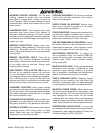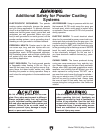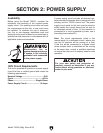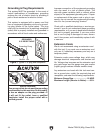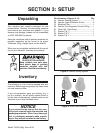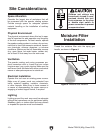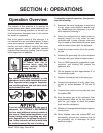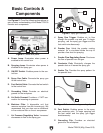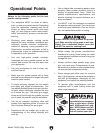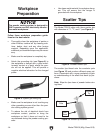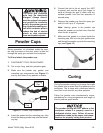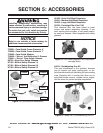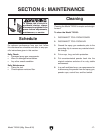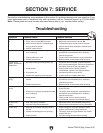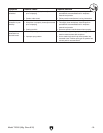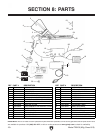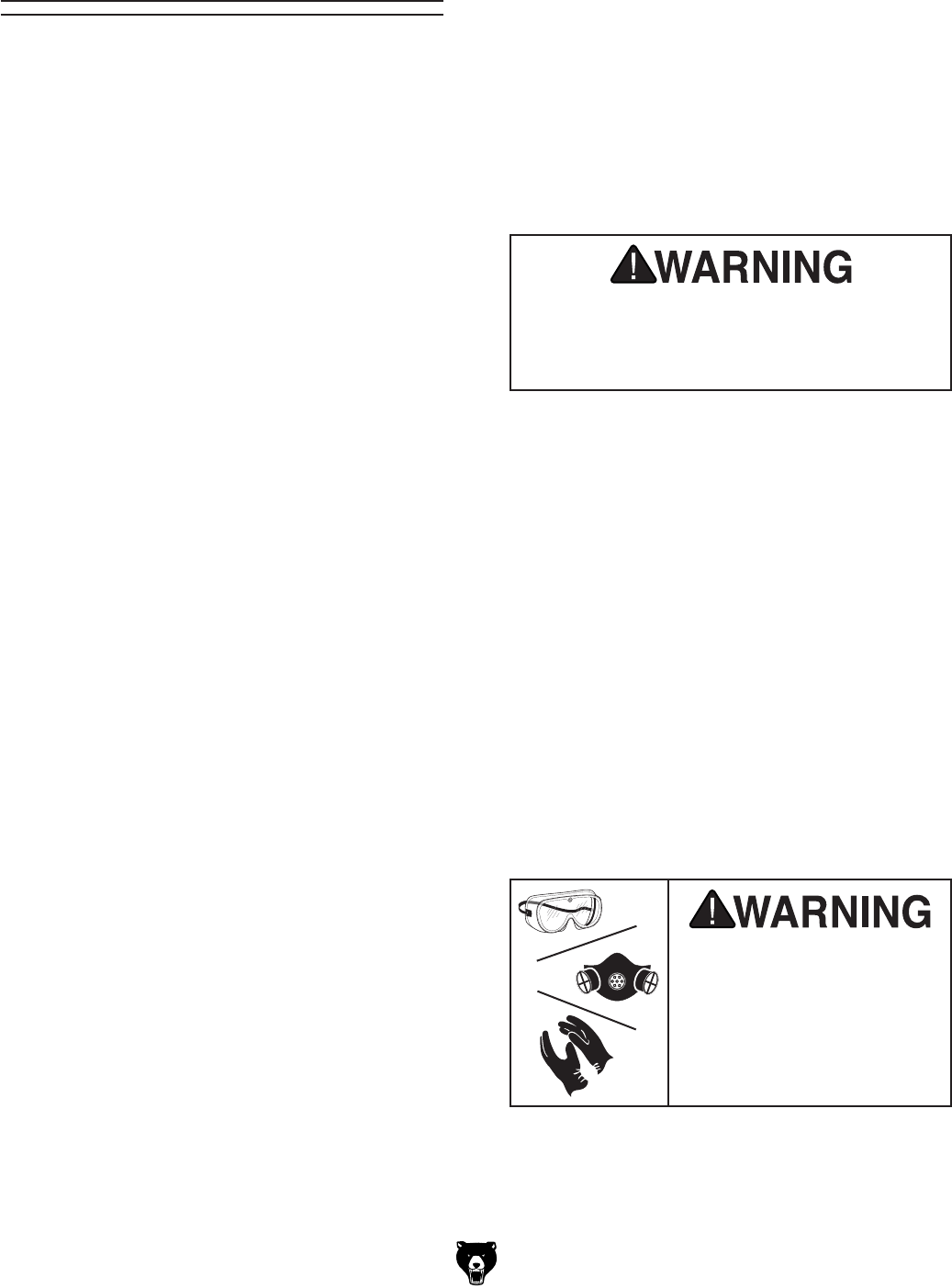
Model T25100 (Mfg. Since 8/12)
-13-
Operational Points
Adhere to the following points for the best
powder coating results:
• The workpiece MUST be clean of debris,
paint, or other non-metal material. Depending
upon the application, cleaning may be as
simple as using mineral spirits and clean
rags, or it may require a much more compli-
cated "pre-treament" process, such as sand-
blasting.
• Obtaining good powder coating results
depends on many variables—workpiece pre-
treatment, powder chemical composition,
method of spraying, curing procedure, etc.
Read books, use online resources, or talk to
professionals to gain an understanding what
is required for your operation.
• Use only high-quality powder coatings.
Investigate the many powder options on the
market and choose the one that best suits
your application.
• Use only pressurized air that is clean, dry,
and free from oil.
• Make sure the system ground clip is firmly
secured to the workpiece or hanger with good
metal-to-metal contact.
• To begin spraying, depress the foot switch
and spray gun trigger simultaneously. The
foot switch enables power to the gun conduc-
tor pole, which electrically charges the dust
as it leaves the gun. The spray gun trigger
allows air to flow through the powder cup and
gun to send the powder onto the workpiece.
• Use the air pressure regulating valve and
powder flow regulating screw to control the
flow of powder through the spray gun.
• Experiment with the scatter tips to gain an
understanding of the effects attained with
each tip.
• Use a side-to-side overlapping pattern when
spraying. Most powder products require a
coating of approximately 2mm. Check the
powder manufacturer's specifications and
practice attaining the correct thickness on a
scrap workpiece.
• You MUST “cure” the workpiece to complete
the powder coating process. The curing oven
must have good ventilation. Poor air circula-
tion can cause discoloration or hazing.
Exposure to powder coat-
ing materials can cause eye,
lung, or skin injury. Always
wear ANSI-approved gog-
gles, NIOSH-approved res-
pirator, and wear clothing
that will protect your skin.
• Follow closely the powder manufacturer's
directions for curing. Under-curing can result
in poor physical qualities and over-curing can
change the color.
• Always maintain clean powder cups, spray
gun, and work area. Contamination of pow-
der products by debris or other powder mate-
rial can produce unexpected results.
• Some orange peel effect may be unavoid-
able. If this happens, wet-sand the workpiece
with 400 grit sandpaper, thoroughly dry the
workpiece, and repeat the coating process.
• To remove slight imperfections, buff the
workpiece with a loose buffing wheel and
white rouge compound.
Fumes from the curing process are poison-
ous! Make sure the curing oven is well-ven-
tilated. Use a dedicated electric oven that
will NOT be used for cooking food.



